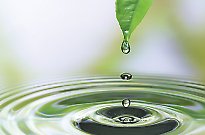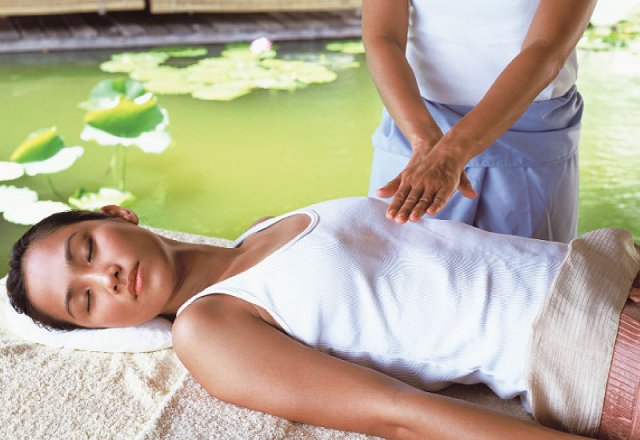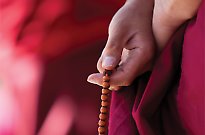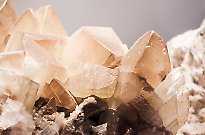
Heal your life with reiki

Feeling stressed, sore or fatigued? Reiki is a Japanese healing technique that uses gentle, non-invasive touch to channel healing energy into the recipient.
Alice Algie explores how we can use this holistic technique to soothe the mind, body and spirit.
What is Reiki?
Japanese Buddhist Mikao Usui developed Reiki in 1922, using spiritual energy (known as ki) to enhance the body’s natural healing abilities.
During a reiki session, the practitioner harnesses the healing energy into their palms and then gently holds them over the recipient’s body in specific patterns. The energy will then be transferred into areas of need, soothing pain, alleviating stress and invigorating the body.
Trisha Fox is a Master Teacher of reiki, and her trainings can be directly traced back to Mikao Usui. She says reiki has the ability to heal on a range of different levels.
“It can clear every negative emotion you have ever experienced, and is particularly helpful in letting go of anger, guilt, sorrow and grief,” she says.
Over time, the traditional system of reiki as created by Mikao Usui has evolved with successive teachers, with the main two branches of teachings now being Traditional Japanese Reiki, and Western Reiki.
In Traditional Japanese Reiki, the set of hand patterns are based upon an intuitive skill of knowing where the hands should be placed, with the main focus being a journey to enlightenment. In Western Reiki, the hand patterns are used in relation to specific areas of need, and its teachings extend across the globe in a way that focuses on healing.
These are only two of the many different branches of reiki now being practiced around the world. And while most practitioners’ methods of healing will vary, it’s important to know all the different interpretations of Reiki are fundamentally based upon Mikao Usui’s original teachings.
How does it work?
The healing system of reiki is based upon the idea that life forces and energies circulate our body through chakras and meridians. They also surround our body creating the energy field known as our aura. This life force that circulates and surrounds us is essential for the vital functioning of our physical body.
When this flow of energy is disrupted, so too is the ability of our body to function properly, resulting in ailments such as pain, illness or stress.
Reiki gives the body the resources it needs to heal itself by harnessing the practitioner’s spiritual energy, and using it to repair and rebalance the recipient’s energy field. This allows the life forces to flow again – subsequently improving health and mental clarity.
“Reiki is an energy we can tap into to create gentle, non-intrusive and profound healing – whether it's a sore neck, stress, or a general feeling of being ‘out of sorts,’” Trisha says.
Reiki practitioners believe the healing practice is so effective because it treats the actual cause, rather than the symptoms and ailments of disease.
The technique
During a full-body reiki treatment, the recipient will usually lie down on a massage table. As the technique is non-physical, clothing is usually worn. Many practitioners will use aromatherapy and music to create a relaxing, welcoming and soothing environment.
Most reiki sessions will begin with a meditation to calm the senses and allow the recipient to enter a pure state of relaxation. They will then either gently lay their hands on areas of the body, or alternatively, rest their hands just above contact with the recipient’s body. Whatever the method, the practitioner will then transfer ki via the palms into the recipient’s body to recharge their energy flows.
The hand positions are held for up to five minutes, and will move across the body, usually starting at the head and moving across the torso, knees and feet.
“The practitioner will often feel their hands get warm, or even hot and tingly. The person receiving the reiki might feel slight tingles, a warmth coming off the practitioner's hands, or even sleepy. This is the energy of reiki flowing through you,” Trisha says.
The movements align with the seven chakras of the body, transferring the energy to areas in need of nourishment.
“Reiki energy goes to where it is most needed. Part of its beauty is that on some level we know what we need, and reiki taps into that,” Trisha says.
Who is it for?
Reiki can be used by just about everyone, for a range of conditions – including stress, anxiety, migraines and pain. Reiki can even be used on animals as its energy flows into any living thing.
Reiki healing can be used on its own as a healing practice, or in conjunction with more conventional treatments. And while it should not be used on its own as a treatment for serious conditions, many hospitals are now offering reiki sessions to patients as a way of alleviating the pain and stress associated with a range of diseases.
“Reiki is a loving energy, freely available to those who can tap into it,” Trisha says.
“Even if you don’t think it will work, and you’re completely sceptical, you will get results.”
It’s important to note reiki is not a belief system or religion – it is a source of healing accessible to everyone who needs it. The healing process of reiki connects with both the practitioner and recipient on a mental, physical and emotional level, making it a holistic healing system to promote synergy of the mind, body and spirit.
In order to get the most out of a reiki treatment, many practitioners recommend you begin with an intention in mind. This may be an emotional intention, such as letting go of a fear, anxiety or burden, or it may focus on rehabilitating a physical injury.
While no two reiki sessions are the same, focusing on your individual intentions will allow you harness the positive energy to its full potential.
An average reiki treatment will last for around an hour, and will cost anywhere between $50-$80. If you choose to study reiki and become permanently aligned with the healing therapy, you will then be able to treat yourself and others. NH


